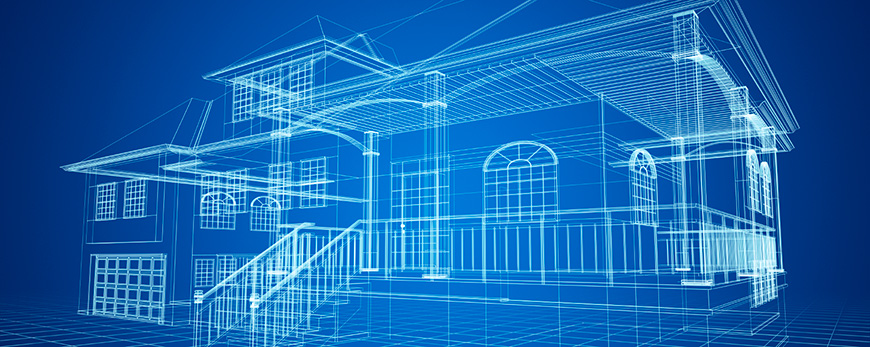How CDA Architects Deliver Cutting-Edge Solutions for Sustainable Architecture
How CDA Architects Deliver Cutting-Edge Solutions for Sustainable Architecture
Blog Article
Comprehending the Collaborative Refine Between Designers and Designers in Modern Building And Construction Projects
The collective procedure between architects and designers is vital in contemporary construction projects, as it harmonizes style intent with engineering feasibility. Exploring these dynamics exposes understandings that might substantially influence task outcomes and general industry standards.
The Relevance of Collaboration
The collaborative harmony between designers and engineers is essential for the effective realization of any kind of building and construction job. This partnership combines unique expertise and perspectives, allowing the combination of innovative layout with useful design options. By interacting, architects and engineers can make certain that a task not only meets aesthetic and practical requirements however likewise follows safety and security, sustainability, and budgetary restrictions.
Cooperation promotes a common vision, promoting the positioning of goals and expectations from the beginning. This placement is critical in attending to potential obstacles and mitigating dangers that could develop during the job lifecycle. A collective technique enables for the effective allowance of sources, enhancing both time and price.
The significance of collaboration extends to the iterative procedure of design and construction, where responses from engineers can inform building decisions, causing even more possible and lasting styles. Conversely, designers can motivate designers to assume creatively about how to accomplish structural stability without jeopardizing creative intent. Inevitably, the joint partnership in between engineers and designers is not simply valuable; it is basic to the production of high-quality, functional, and innovative constructed settings that fulfill the requirements of culture.
Communication Strategies and Devices
Efficient communication techniques and tools are vital for fostering cooperation between architects and designers throughout the task lifecycle. Developing clear networks of interaction is necessary to ensure that all staff member are straightened with job objectives, timelines, and responsibilities. Normal conferences, both in-person and online, provide opportunities for stakeholders to review progression, address worries, and make notified decisions.

Additionally, embracing joint communication tools, such as Slack or Microsoft Teams, permits instant messaging, data sharing, and recurring discussions, advertising an extra agile action to emerging concerns. Record management systems also play an important duty in arranging project documentation, ensuring that all employee have access to the most up to date info.
Shared Goals and Task Vision
A linked project vision serves as the foundation for effective partnership in between engineers and engineers (cda architects). This shared vision not only lines up the initiatives of both celebrations yet additionally develops a common framework for decision-making throughout the project's lifecycle. By verbalizing clear objectives, stakeholders can effectively navigate the complexities of modern building jobs, making sure that both visual and useful needs are fulfilled
Developing common objectives includes open dialogue and a complete understanding of each self-control's contributions. Engineers normally concentrate on design intent, spatial relationships, and user experience, while designers highlight structural honesty, systems performance, and compliance with laws. When these viewpoints are lined up, the result is a cohesive project that follows both creative ambitions and technological expediency.
Additionally, a well-defined job vision fosters liability amongst group participants, encouraging each participant to take ownership of their role in achieving the wanted end result. Routine check-ins and collective workshops can further enhance this dedication, allowing for adjustments to be made as the job develops. Ultimately, a common vision not only boosts team effort but additionally raises the quality of the last deliverable, resulting in successful job completion.
The Role of Modern Technology
Leveraging innovation has come to be vital in enhancing partnership between engineers and engineers. The assimilation of advanced software program tools promotes real-time communication and information sharing, making it possible for teams to function more effectively and effectively. Structure Details Modeling (BIM) sticks out as a pivotal innovation, permitting both architects and designers to develop comprehensive 3D models that envelop design intent and structural honesty. This shared visual depiction minimizes misunderstandings and enhances the decision-making procedure.
Furthermore, cloud-based platforms enable seamless cooperation, permitting task stakeholders to accessibility and upgrade job data from anywhere. This fosters a culture of openness and liability, as adjustments can be tracked and assessed in real-time. In addition, mobile applications additional boost interaction, providing on-site groups with prompt accessibility to task specs and updates.
Emerging technologies such as artificial knowledge and artificial click to investigate intelligence are also starting to contribute in predictive evaluation, aiding groups determine potential concerns prior to they occur. Inevitably, the function of technology in architecture-engineering cooperation not just improves operations effectiveness yet likewise enhances development, causing more effective project end results. By accepting these technical improvements, architects and designers can ensure a much more cohesive and efficient collaborative process throughout the construction lifecycle.
Case Researches in Successful Collaborations
Various instance studies show the profound effect of reliable partnerships in between engineers and engineers on job end results. One noteworthy instance is the collaboration on the High Line you could try this out in New York City City, where landscape engineers, engineers, and metropolitan organizers collaborated to change an abandoned rail line into a vivid view it public park. This multidisciplinary approach not only boosted the visual high quality yet also guaranteed structural safety and security and environmental sustainability.

The Burj Khalifa in Dubai additionally demonstrates the importance of collaborative efforts - cda architects. The assimilation of style and design know-how allowed the job team to achieve extraordinary elevations while adhering to safety regulations and visual vision
These examples underscore the importance of interaction, depend on, and shared goals. In today's complex building and construction atmosphere, such partnerships are vital to browsing difficulties and delivering tasks that satisfy both functional and visionary objectives.
Final Thought
In verdict, the partnership between engineers and engineers is crucial for the success of contemporary building and construction projects. Efficient interaction techniques, a shared job vision, and the assimilation of advanced innovations are crucial parts that promote this partnership.
Report this page